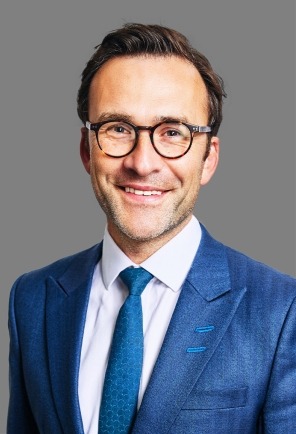The Power of Organisational Stand-up in Unlocking Value in Carve-Outs
Introduction
Establishing or standing up an organisation to operate independently from the vendor is a key component of most carve-outs.
According to Alvarez & Marsal (A&M)’s recent survey with European private equity funds, 73% of investors in carve-outs use the sign-to-close period to accelerate value creation realisation. In our view, organisational stand-up presents a critical lever for accelerating value creation through the early delivery of an optimised end-state operating model that can also minimise one-off costs.
At A&M we use our hands-on style and deep operational experience to support our clients through the carve-out journey, including the design and stand-up of standalone organisations. We experience first-hand the impact of implementing both tactical and strategic solutions to deliver value quickly while managing execution risks.
Underpinning our approach to carve-outs are several key benefits that we can realise through the stand-up of organisations, which are outlined below.
The Optimisation opportunity beyond G&A
Carve-outs tend to impact the general and administrative (G&A) functions of Finance, HR, Legal and IT, but there are sources of value in other areas such as supply chain management, production support (e.g. engineering, maintenance) and, in some cases, the commercial functions.
Standing up these teams in an optimal target organisation typically requires assessing and developing the functions to determine the appropriate team size, shape and cost base that will ultimately deliver value. This should be done using a combination of levers including:
-
Management spans and layers: increasing the number of direct reports to managers; removal of management layers; and simplification of structures such as the removal of matrix organisations between global/regional/local BU levels.
-
Role consolidation: removing and consolidating duplicate roles; or centralising and consolidating fragmented functions across sites and business units, for example through the creation of shared service centres or centres of excellence.
-
Right-sizing: optimising functions based on the appropriate size and scale of the target standalone business.
-
Process optimisation: technology and non-technology enabled process simplification; and elimination of redundant processes such as group reporting.
Changing the approach to organisational stand-up
Typically, vendors seek to do the minimal amount of separation prior to close of the deal in an attempt to minimise one-off costs and remove separation from the critical path for closing. The classic approach is for a vendor to offer a Transitional Service Agreement (TSA) for services provided by shared resources, alongside longer-term service or licence agreements, rather than to implement a separation prior to a sale. More recently, however, we have noticed a shift in the approach taken by vendors as they attempt to accelerate full operational separation and reduce residual exposure to acquirers and the divested business post-closing.
For example, we have started to see vendors seeking to stand-up organisations themselves pre-close thereby reducing the requirement for TSAs; or proposing to deliver buyers with a turn-key standalone G&A and IT solution, which reduces the management burden that comes with an operational dependency on the vendor post-close via the TSA.
While this approach can make sense from a vendor perspective, the organisational setup chosen by the vendor typically follows the current vendor operating model or reflects the in-house skills and capabilities of the incumbent team, as opposed to reflecting the needs of the future standalone organisation. The knock-on impact on the buy-side is that they inherit an operating model and cost base that is not aligned to their view of an optimised end-state. As a result, buyers are left with a significant amount of transformation to deliver, and potentially a larger overall transition cost to realise the optimal investment or value case.
In recent cases, A&M has supported clients during the sign-to-close period to try and mitigate the risk of being left with a sub-optimal structure and cost base. By engaging with the vendor early and working collaboratively on both the Day-1 and end-state operating models (including hiring plans), headcount and associated costs can be reduced in many cases.
Successful strategies include persuading vendors to use interim or contingent staff for certain roles that are not anticipated in the optimised end-state; or adjusting the total headcount expected to transition for Day -1. Both tactics have been very productive in further reducing transition costs. Good working relationships with the vendor are paramount in this approach, which we recognise may not always exist.
Opportunity to accelerate value creation
The removal, relocation and/or outsourcing of proposed roles tend to be less complex and expensive than making changes to existing roles. For this reason, we view organisational stand-up as a critical component of value creation plans in carve-outs as it enables:
-
Early value realisation: an example of this is the cost avoidance through either not hiring roles at all or hiring roles in lower cost locations.
-
Reduced one-off costs: for example, by avoiding unnecessary recruitment and redundancy costs.
-
Reduced business disruption: by minimising the setup of interim-state teams.
However, this opportunity is often not explored to its full potential, as buy-side and sell-side objectives do not always align on the design of the stand-up and the operating model in place at deal close.
The priority of vendors in carve-outs tends to be on the resolution of separation issues in preparation for deal close or Day-1 while minimising execution risks, which often results in a like-for-like, or at least similar solutions to the status quo. Whereas the acquirer, whether a strategic or private equity investor, will seek to establish a solution as closely aligned to their optimised end-state as possible, resulting in a natural tension between the parties. We believe these competing priorities can be better managed to the benefit of both parties through tactical and strategic decisions and greater collaboration prior to deal close.
In a recent case, working closely with legal and tax teams, we were able to leverage the stand-up of functions to ensure teams and third-party contracts were located in certain jurisdictions or legal entities to support legal entity and tax structuring objectives. The organisational stand-up can also help with other value creation initiatives, as we saw in a recent case where we supported a client accelerate their office rationalisation programme through the hiring of staff in alternative locations.
Conclusion
A&M sees organisational stand-up in carve-outs as an opportunity for buy-side investors to accelerate value creation and the delivery of the end-state target operating model for newly acquired businesses. We have identified a number of ways in which acquirers can better take advantage of this opportunity, some of which include influencing vendor hiring plans, leveraging temporary resources or adjusting TSA scopes to accelerate the implementation of the optimised end-state (and reducing the number of interim states required during the transition).
While clearly there are risks to be managed during the stand-up and the carve-out more broadly, these risks can be identified early with suitable mitigations activities such as appropriate TSAs, hiring of temporary staff and third-party support. With careful transition planning and tight execution, the opportunity can be leveraged to deliver value earlier in the investment lifecycle.
How can A&M help
A&M’s private equity-focused professionals understand the need for agility and the importance of speed to execution in order to prioritise the key areas of improvement that will positively impact EBITDA and ensure sustainable cash generation at the portfolio company level. Ensuring a successful transformation requires strong leadership at the top that can then be exemplified.



